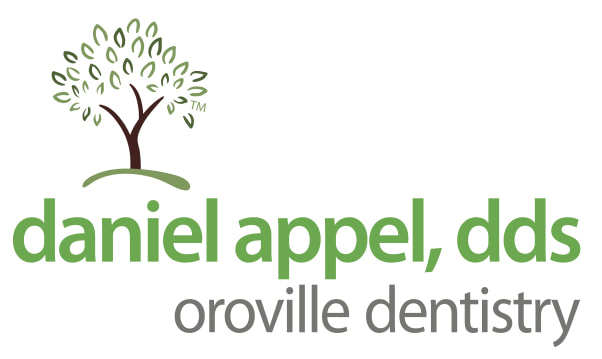We all love Sugar! So many of the best foods are full of Sugar! So of course, we enjoy them regularly. But then comes that sinking feeling as we head to our dental appointment....What has that wonderful sugar done to our teeth this time?
Is it even the Sugar that causes dental problems? How much is to much? Sometime there is so much conflicting information it's almost easier just to ignore the conversation.
So where is the balance? Lets cut through some myths together to make this conversation a little easier. Lets examine the science behind sugar and cavities.
Sugar and the Acid Attack: A Battleground in Your Mouth
Imagine your mouth as a bustling metropolis. Here, good and bad bacteria constantly vie for territory, forming a sticky film on your teeth called plaque. Think of plaque as a dense, miniature city where the bad bacteria, particularly Streptococcus mutans, love to congregate. These unwelcome residents have a particular fondness for sugary treats. When you ingest sugary foods or drinks, the bacteria throw a sugary celebration, using the sugar as fuel. However, their celebratory byproducts are far from pleasant. As they break down the sugar, they produce a potent acid waste product.
The enamel on your teeth acts as the city’s fortified walls. Enamel, the hardest substance in the human body, is designed to protect your teeth from these microscopic invaders. However, the acid produced by the bacteria constantly breaks down the enamel’s defenses. Over time, this relentless assault can create breaches in the enamel, causing cavities — tiny holes that expose the teeth's sensitive inner layers.
Not all sugars are created equal. Naturally occurring sugars present in fruits and milk have less impact on your teeth than the refined, added sugars in candies, soda and processed foods. These added sugars are readily available for the bacteria to consume, leading to a faster and more concentrated acid attack.
Beyond Sugar: Cavity Culprits
1. Frequency of eating Sugar - While sugar gets a bad rap when it comes to cavity formation, it’s just one piece of the puzzle. The frequency of sugary snacks matters even MORE! Constantly sipping soda or having frequent sugary snacks keeps your mouth in a constant state of acid attack.
2. Acid - even from non-sugary sources, can also be a problem. Soft drinks, certain juices and even some fruits are acidic and can erode enamel. Acid can weaken your enamel’s defenses and, eventually, lead to cavities.
3. Low nutrient diets - A diet lacking nutrients like calcium and fluoride can increase cavity risk, too. Calcium is a building block for strong, healthy teeth, while fluoride helps strengthen enamel and even reverse early signs of enamel erosion. Without these essential nutrients, your teeth are more susceptible to the acid attacks launched by the bacteria.
4. Home care habits - Your oral hygiene habits play a crucial role in defending your pearly whites, as well. Brushing and flossing properly removes plaque and food particles that harbor bacteria, preventing acid buildup. Improper brushing or neglecting flossing allows the bad bacteria to thrive and continue their relentless assault on the enamel walls.
5. Saliva limitations (Xerostomia) - dry mouth can DRAMATICALLY contribute to cavity formation. Saliva plays an important role in washing away food particles and neutralizing harmful acids. Without sufficient saliva flow, the acid produced by the bacteria has a longer time to erode the enamel.
This lack of correct saliva can be caused by a number of things - autoimmune diseases, radiation treatment that damages the glands, decrease in function of the glands, and most commonly, multiple medications. The higher the number of medications and individual is taking, the higher the risk for dry mouth.
Fighting Back: Strategies for a Healthy Smile
The good news is that you have the power to fight back against cavities and protect your smile!
Here are some key strategies to promote a healthy smile:
1) Floss - A lot. At least 1-2 times per day.
2) Brush - at least 2 times per day for two minutes. Pay attention to what you are doing, focusing on gentle small circles aimed at the gumline.
3) Fluoride - use it. Most should be on a prescription level fluoride at least once per day.
4) Diet - focus on foods that minimize added sugars as much as possible. Of course enjoy your favorite snack now and then, but be sure to rinse your mouth out with water afterwards to minimize the remaining sugar and acid in your mouth.
5) Chew sugar free gum - this stimulates saliva and pulls plaque off of areas the gum comes into contact with. Look for gum with xylitol, an ingredient that can inhibit bacterial growth.
6) Hygiene cleanings regularly - we all have spots we miss. Hygienists help professionally remove the plaque buildup and help coach us on where we can do a better job.
7) Water - drink lots of it. This washes away sugar and acids in the moment and also helps improve our saliva rates throughout the rest of the day.
Hopefully this helps you understand the bigger picture of why sugars are so important or oral health.
In the real world, no one is going to stop sugar all together long-term. And where would the food joy be if you did! Enjoy some delicious treats now and then, but try to minimize regularly consuming high levels of added sugar. By following the listed strategy and trying to be moderate on added/sucrose sugar consumption, you can have the best of both worlds.
Cheers,
Dr. Daniel Appel

